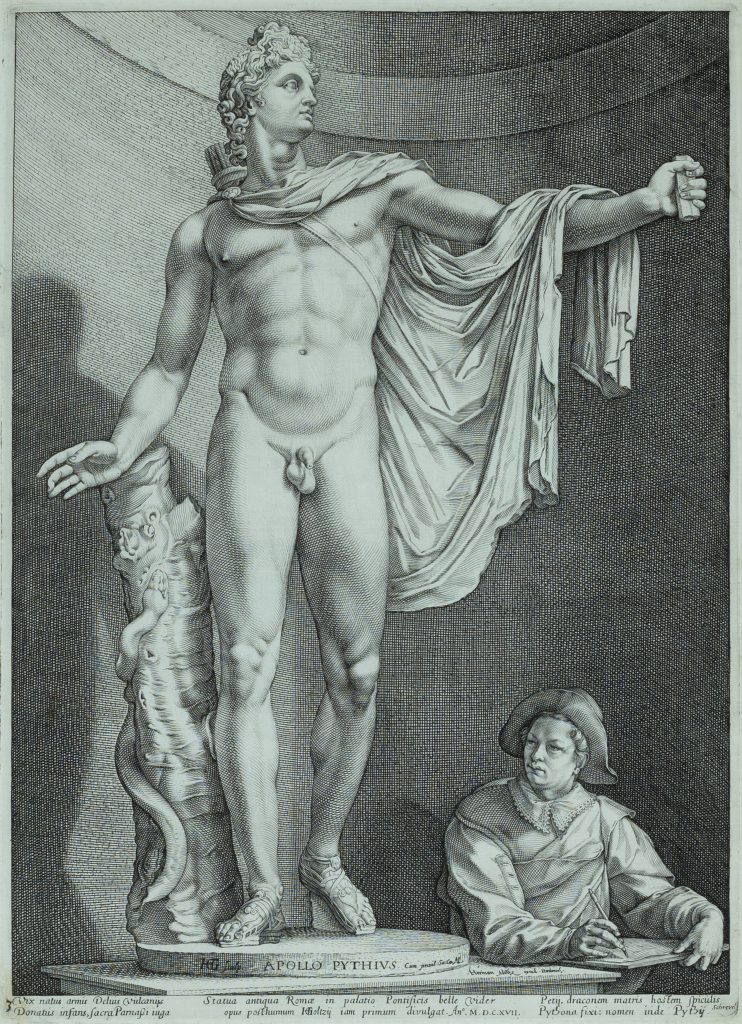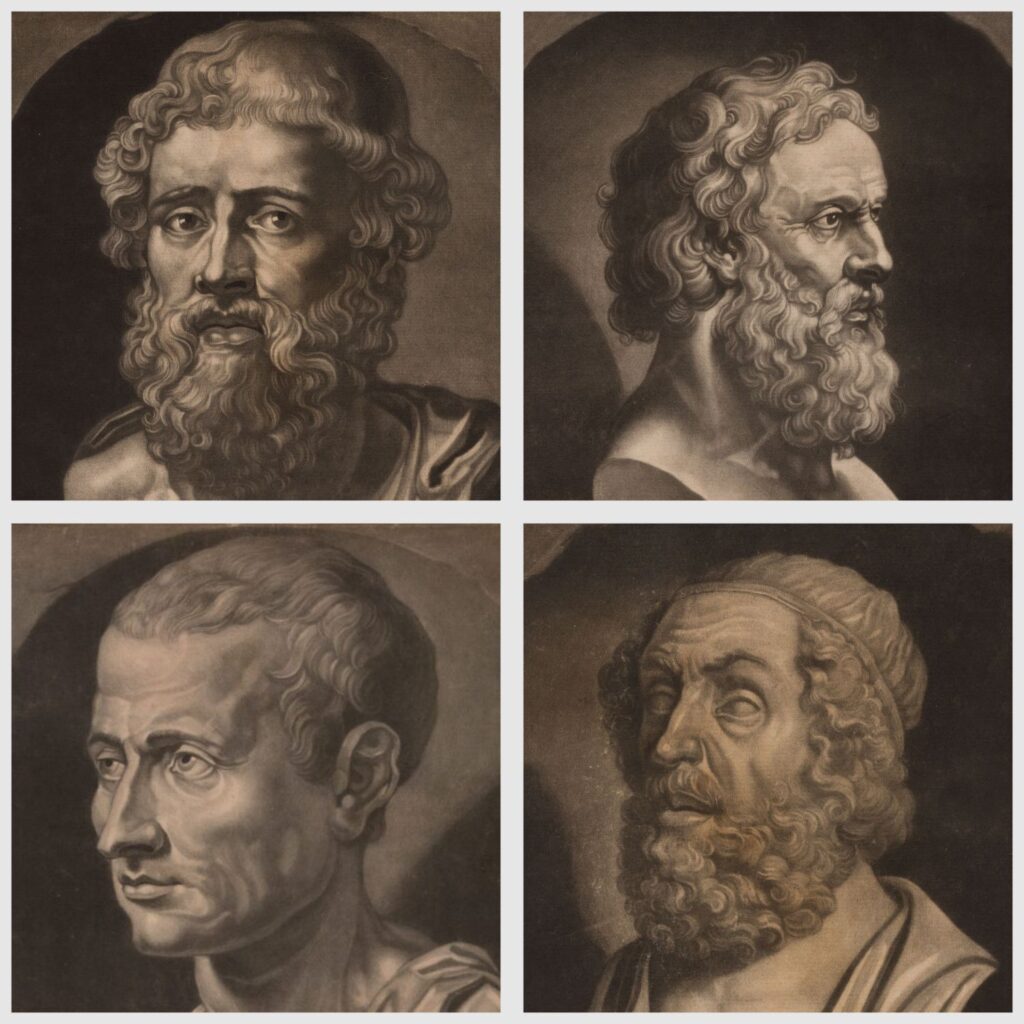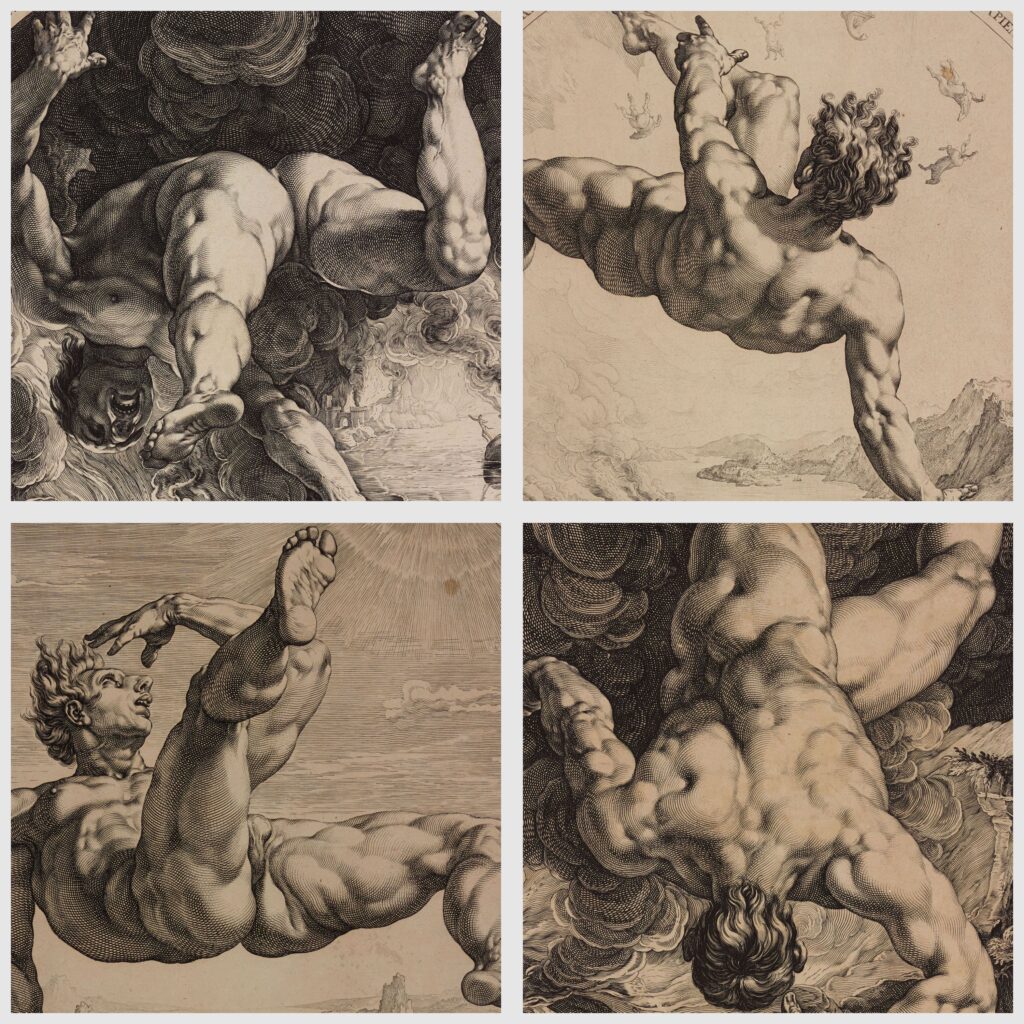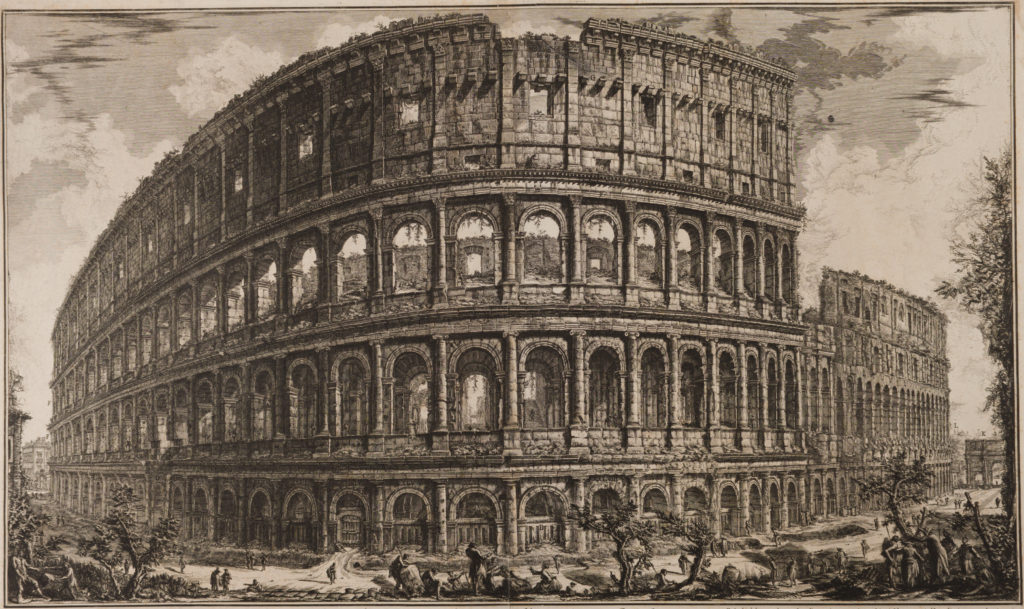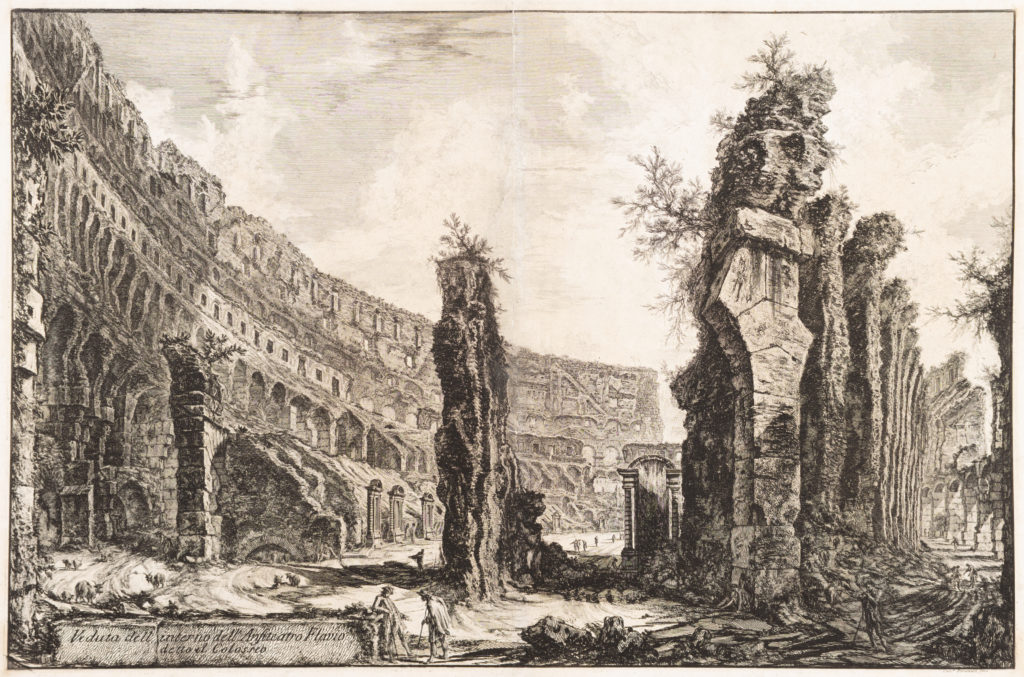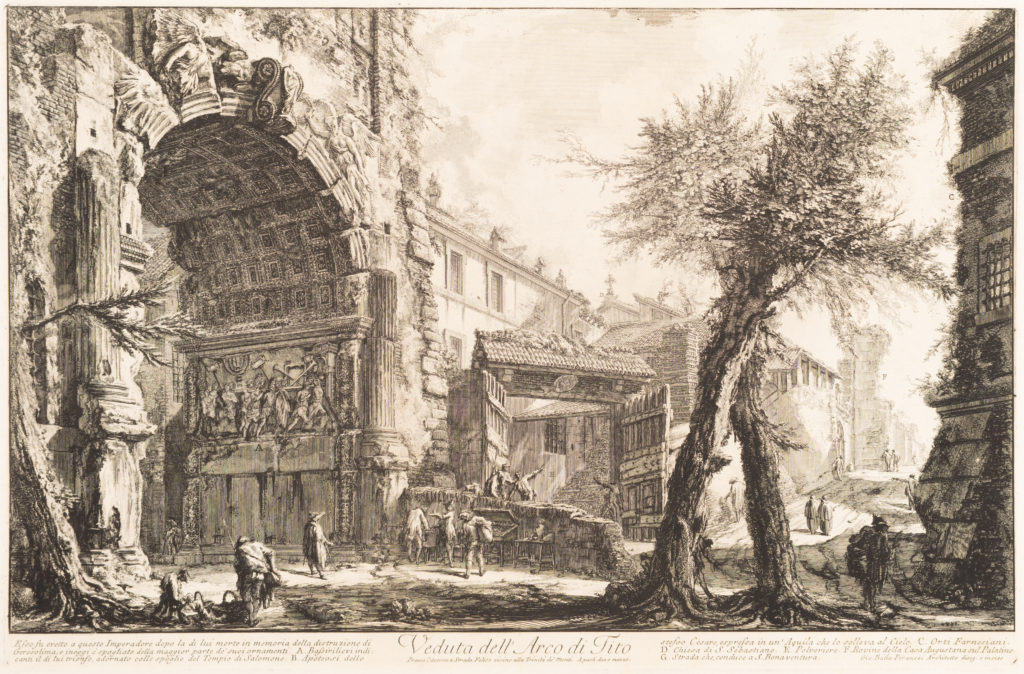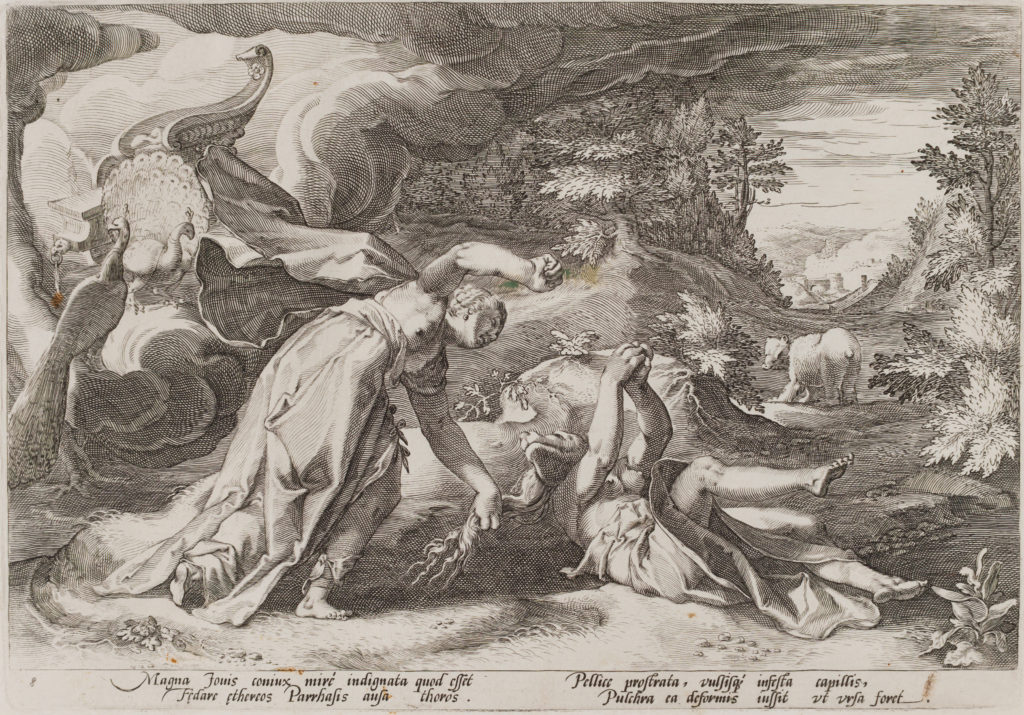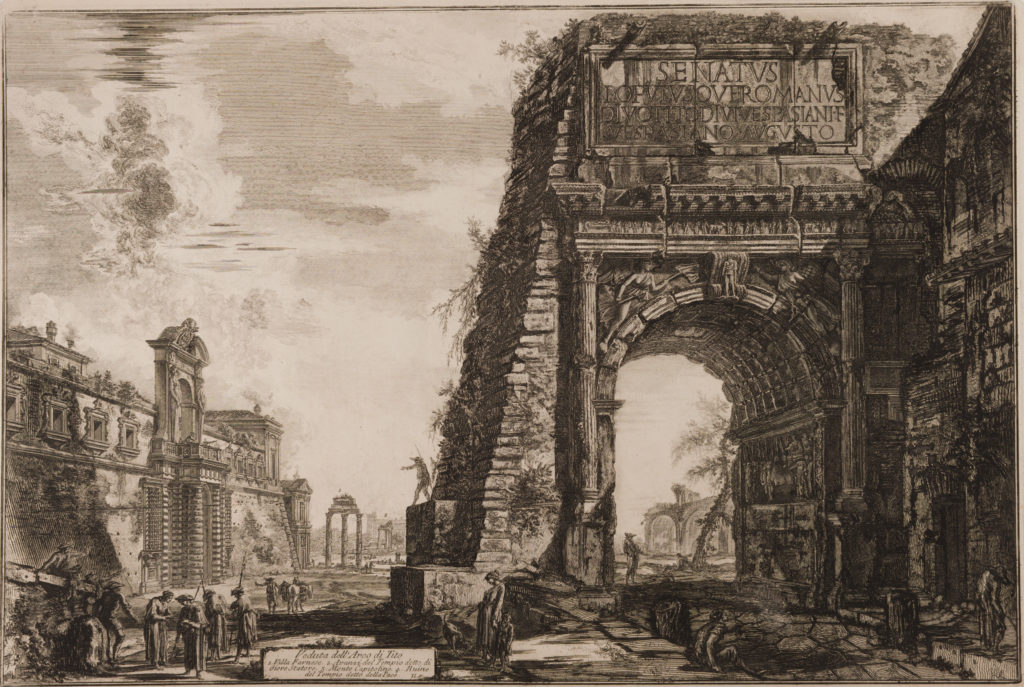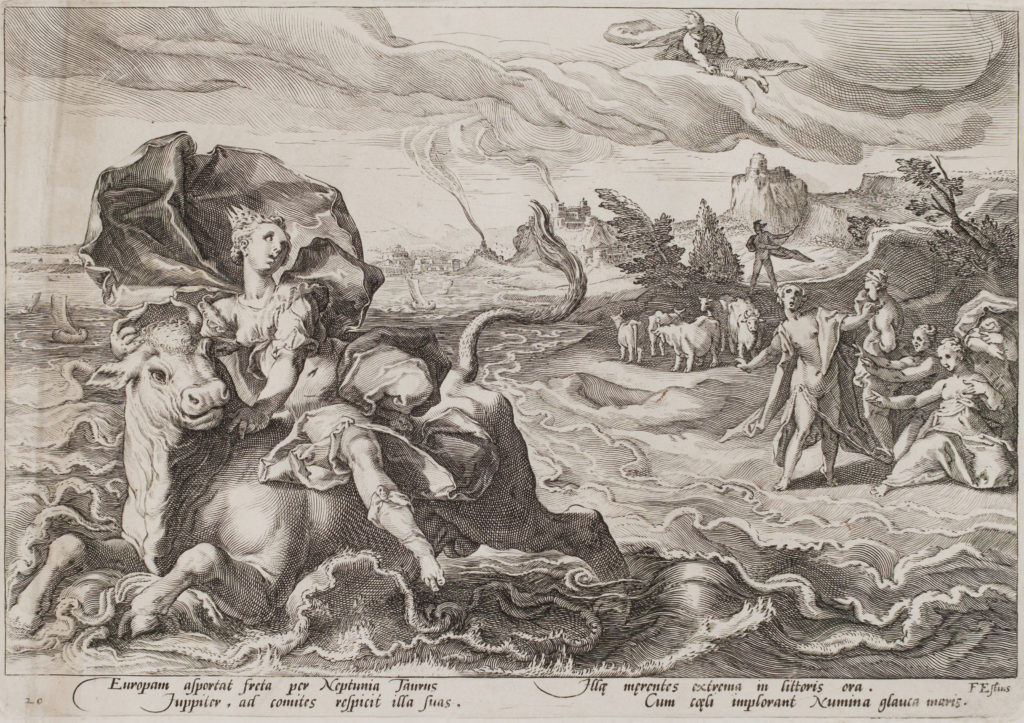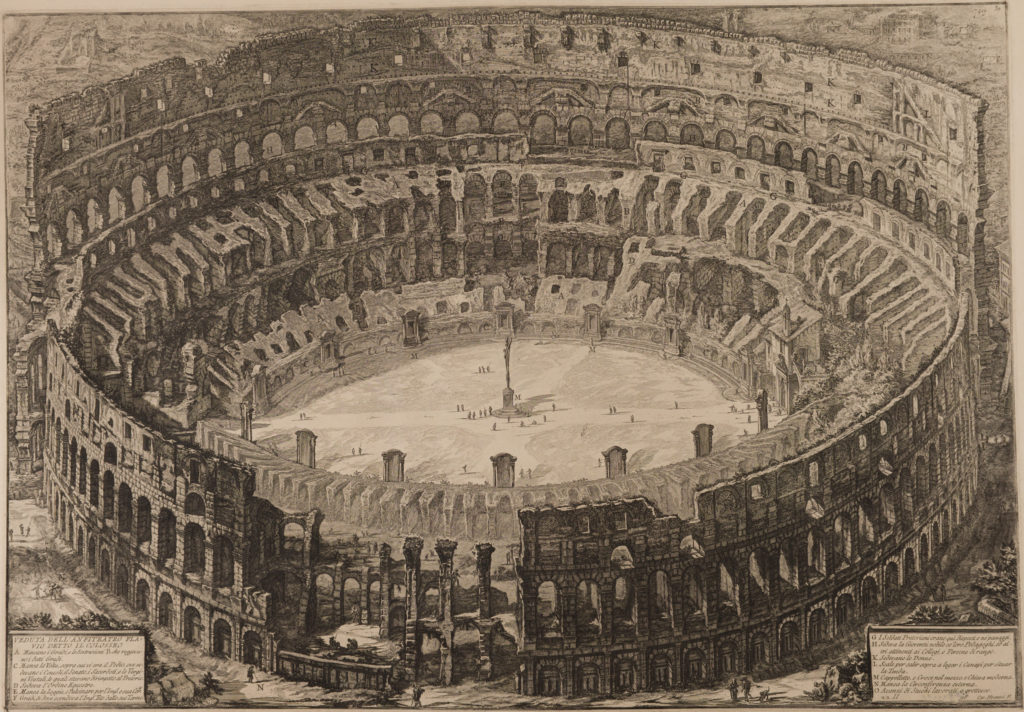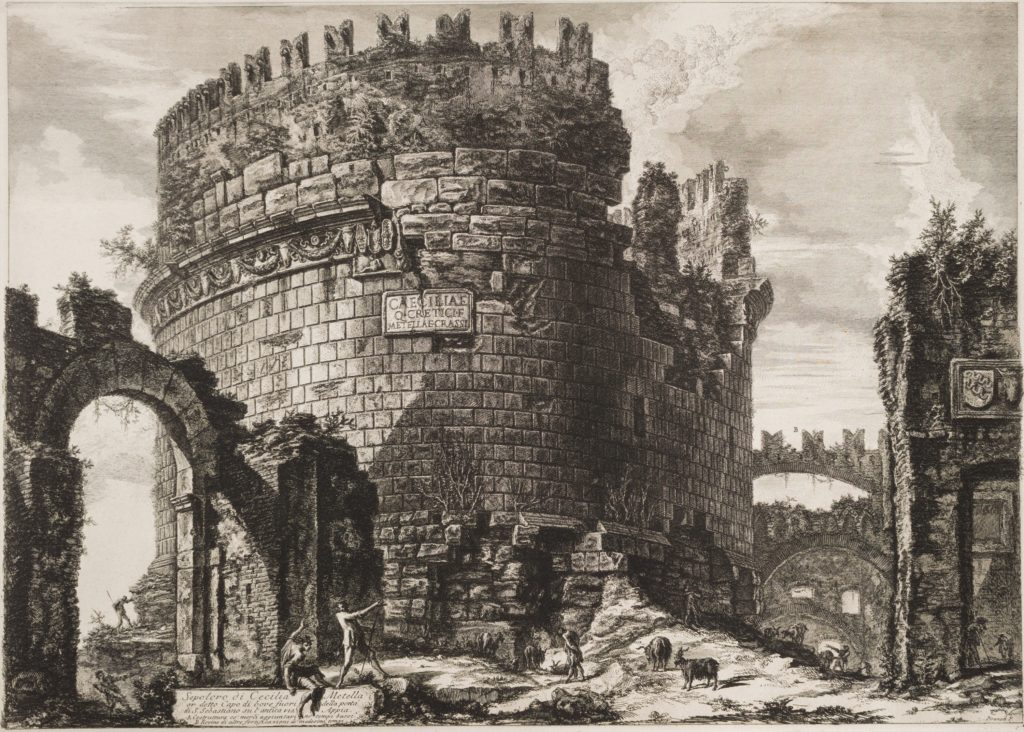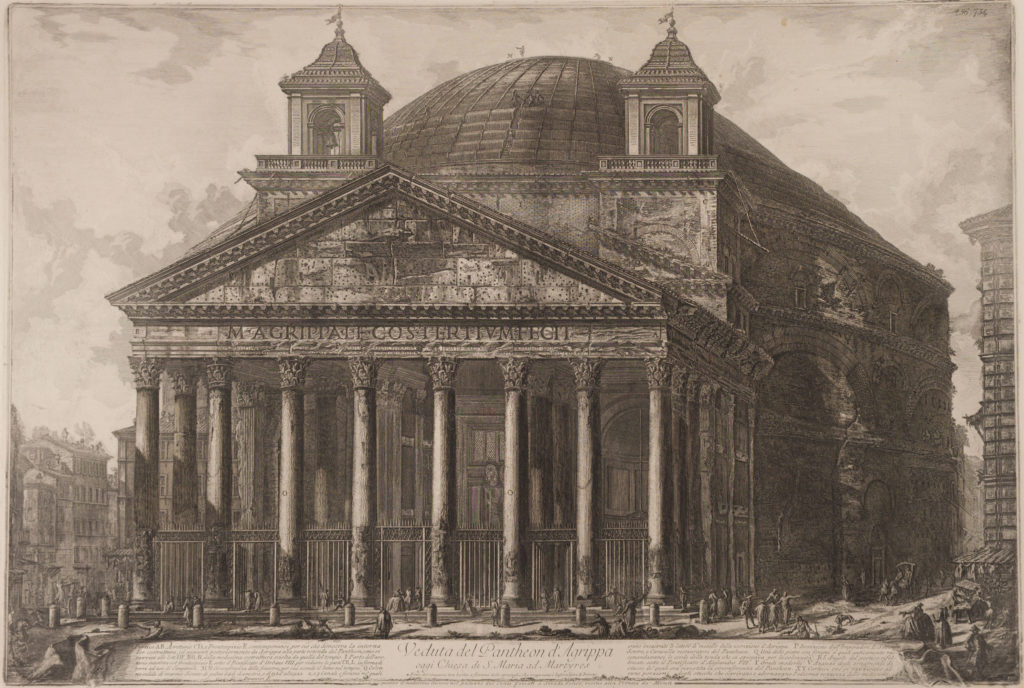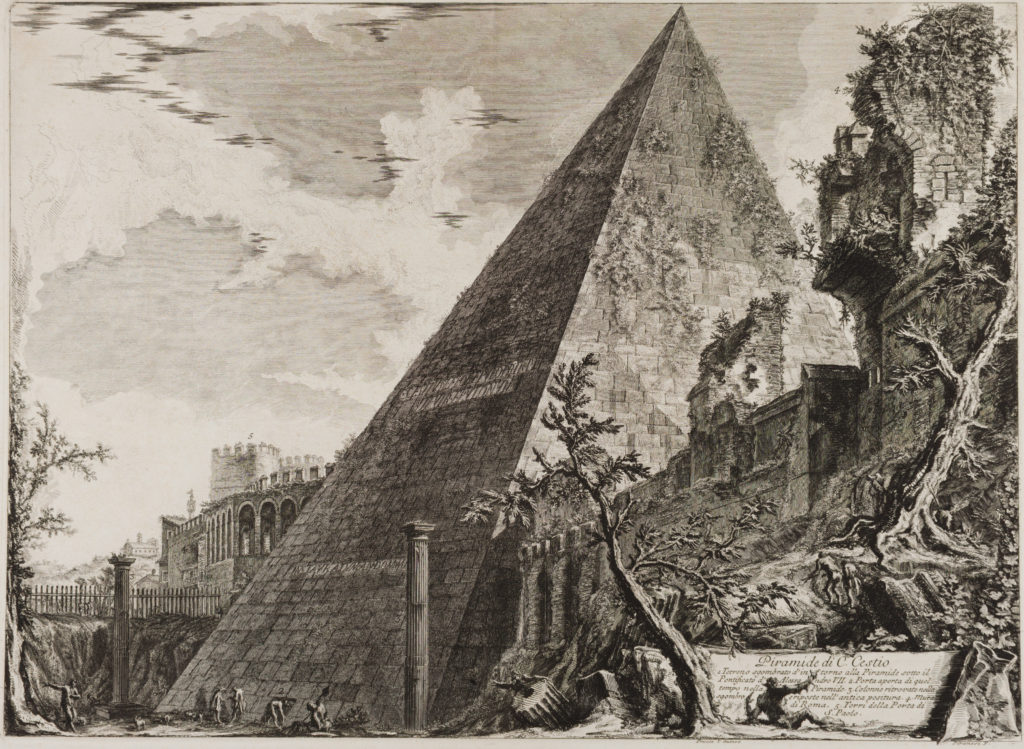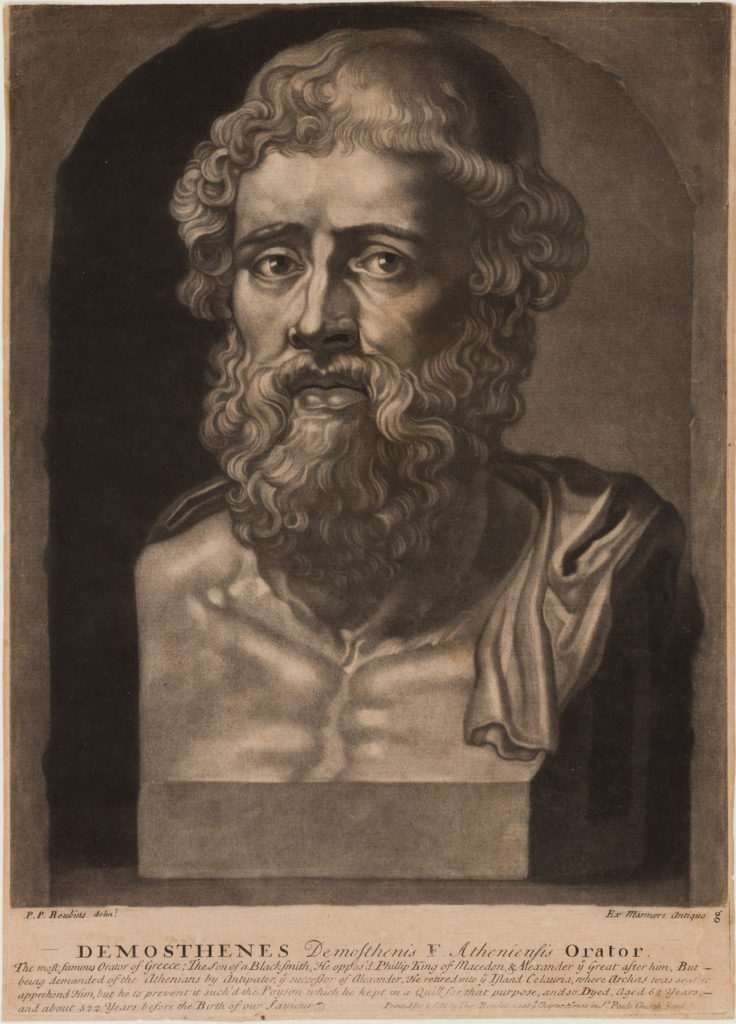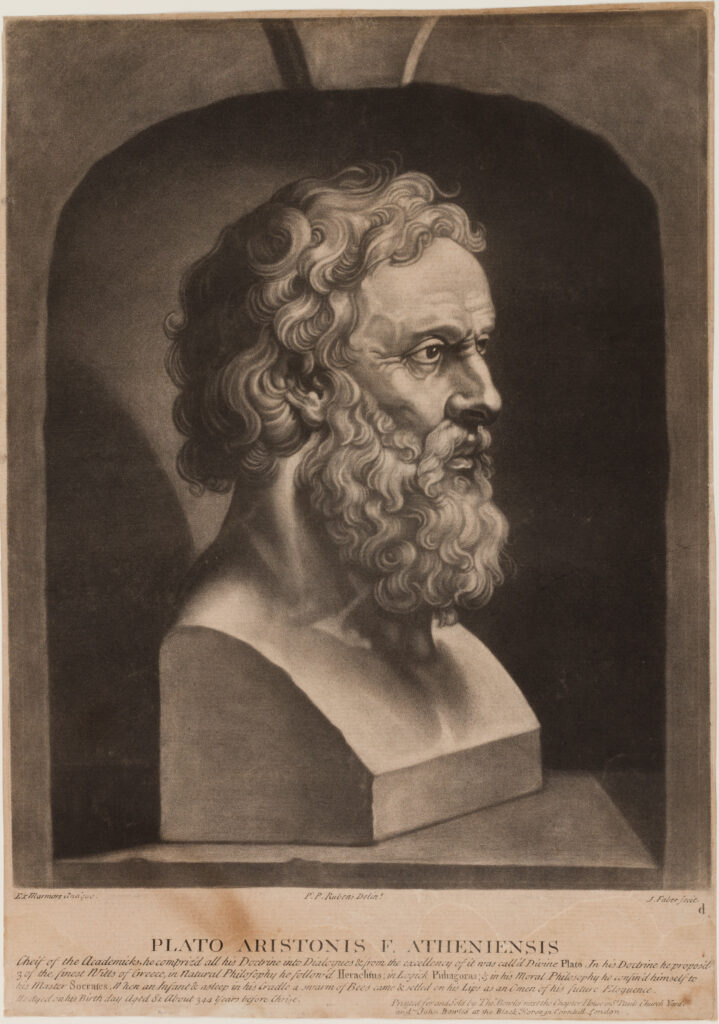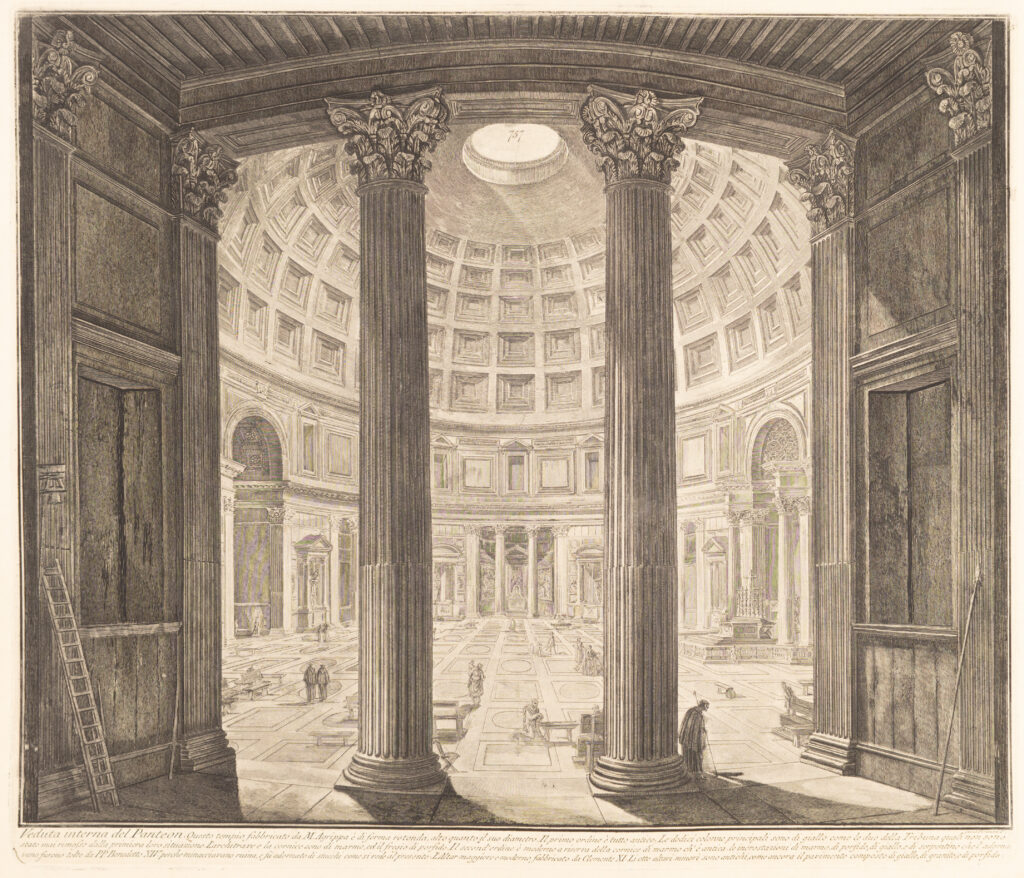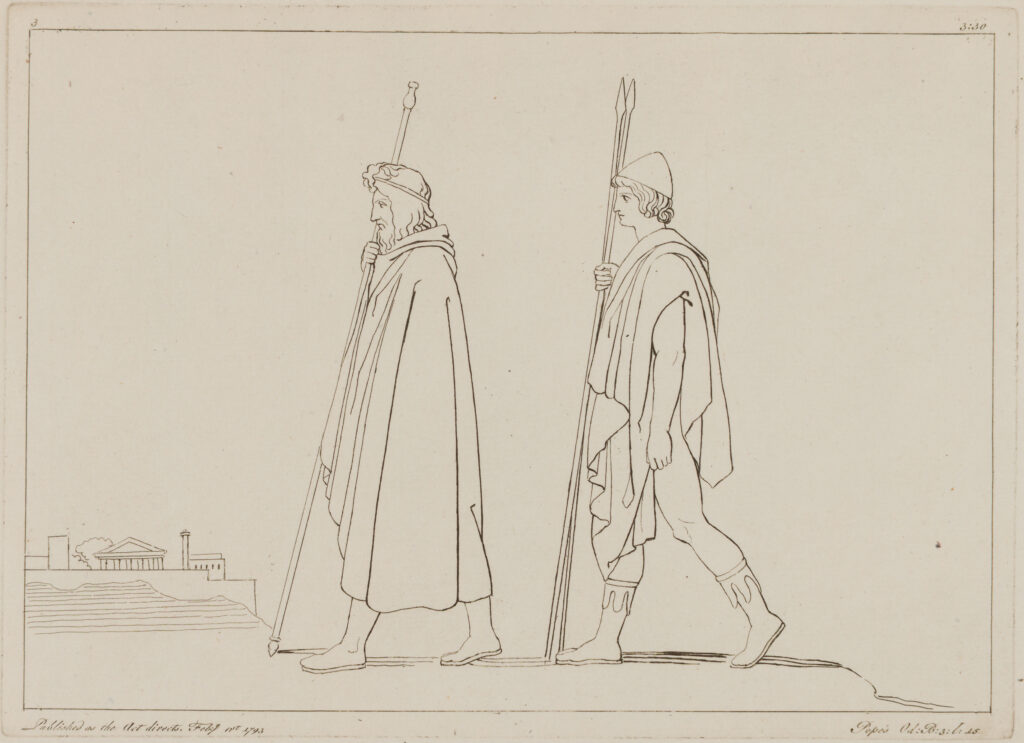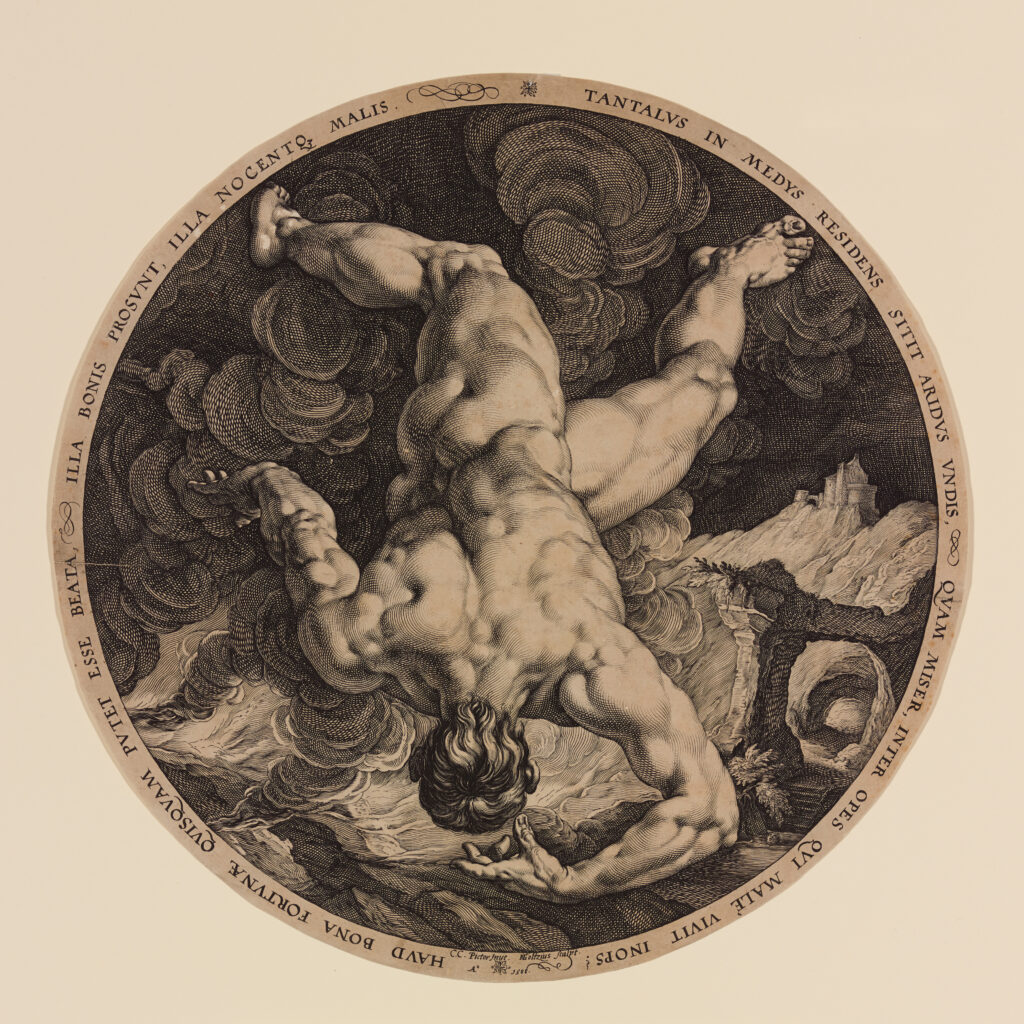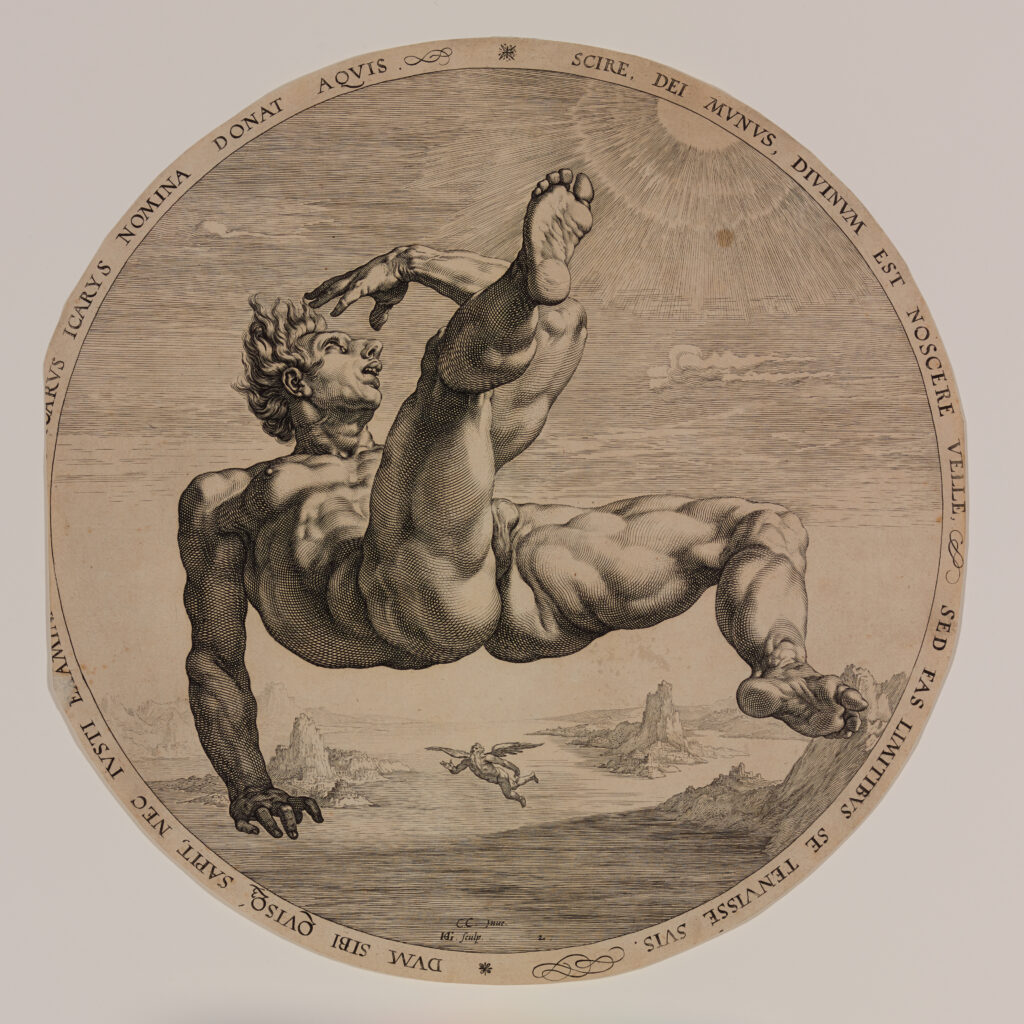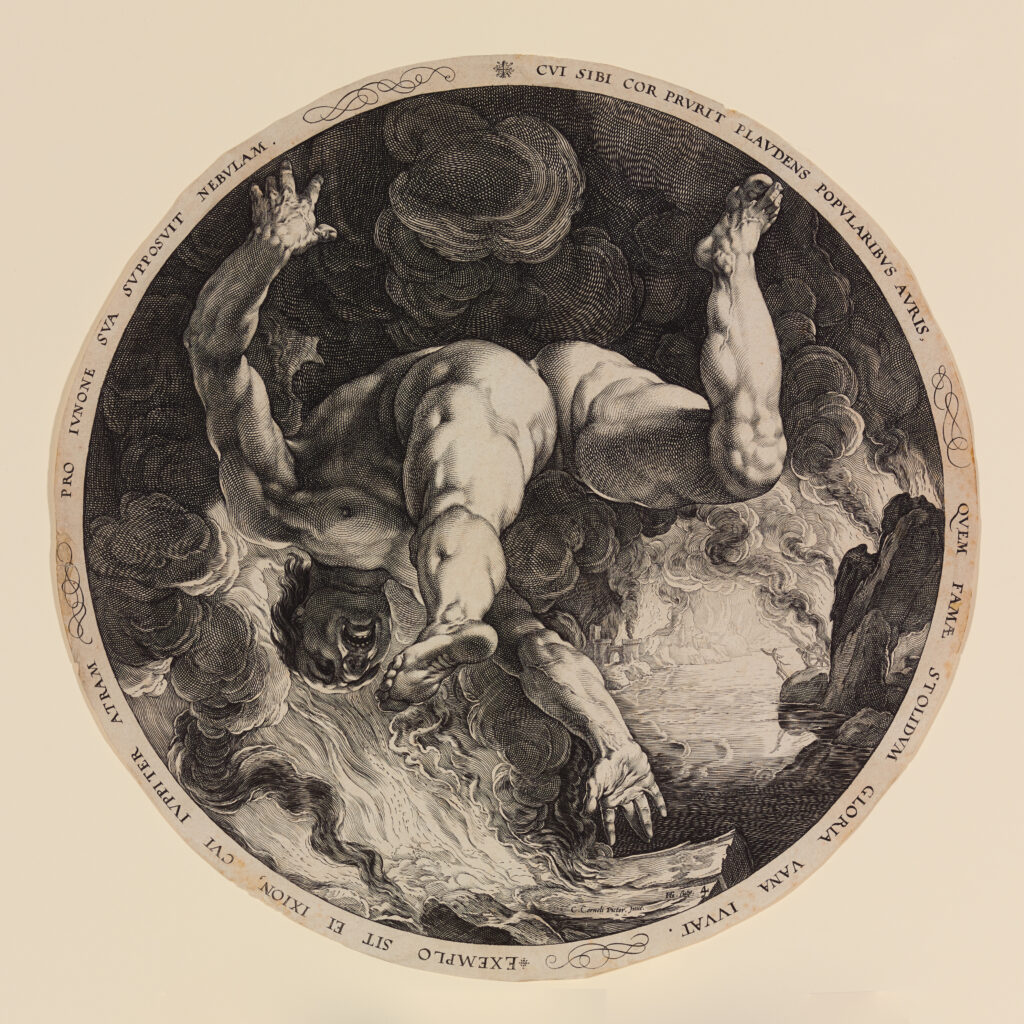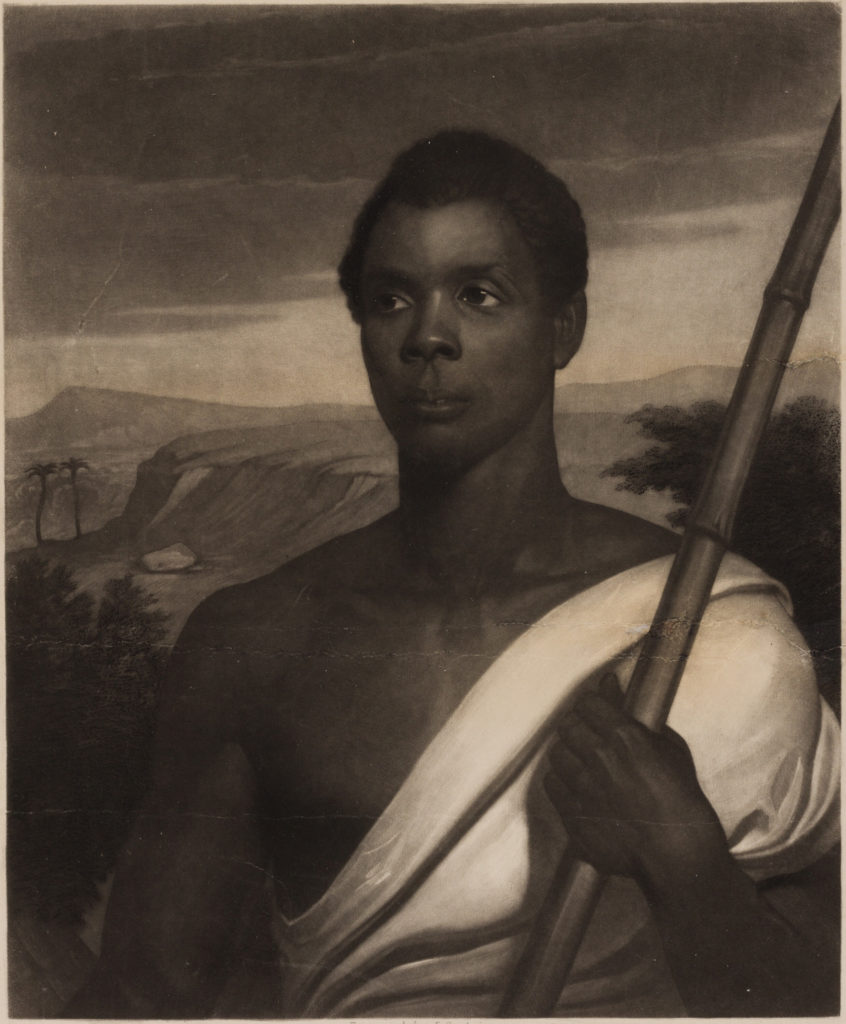Apollo Belvedere
Gift of Charles Pendexter
2009.16.341This print by master printmaker Hendrick Goltzius captures an artist copying at the foot of the Apollo Belvedere, one of the most famous antique sculptures of the Vatican collections. The artist pictured may in fact be Goltzius himself, who travelled through Italy between 1590 and 1591, shortly before this engraving was made. Since the Renaissance, European and, later, American artists devoted significant time and energy to copying ancient sculptures as part of their formal training. These immobile statues of nude and semi-nude male and female figures provided ideal subjects from which to learn how to accurately render proportion, perspective, and light.
While such studies could be done using plaster casts beginning in the eighteenth century, artists copying masterpieces remained a common sight in galleries and collections across Europe up to the modern era. Most artists who travelled to Rome through the nineteenth century are known to have spent long hours in the galleries of the Vatican and Capitoline Museums drawing ancient sculptures; so common was the practice that such drawings are recognized as a genre in their own right, known as “copies after the antique.” Several such works feature in the Museum’s drawings collection.
